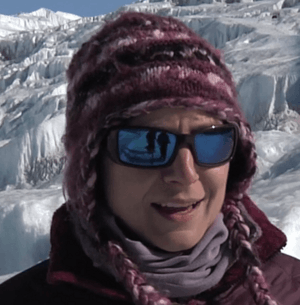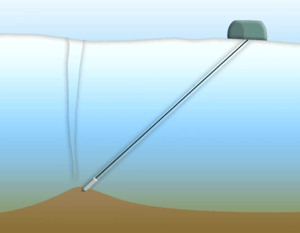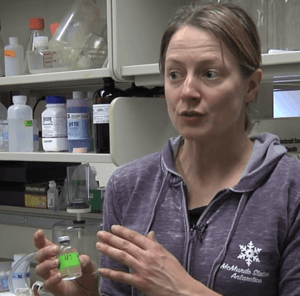Jill Mikucki facts for kids
Quick facts for kids
Jill Mikucki
|
|
|---|---|

Mikucki in the Antarctic
|
|
| Nationality | American |
| Alma mater | |
| Scientific career | |
| Fields | Polar microbiology |
| Institutions | University of Tennessee |
Jill Ann Mikucki is an American scientist who studies tiny living things called microbes. She is also a teacher and a researcher in Antarctica, one of the coldest places on Earth. She is famous for her work at a place called Blood Falls. There, she showed that microbes can live and grow deep under ice, even without sunlight. Jill Mikucki leads international teams that study these amazing hidden ecosystems.
Becoming a Scientist
Jill Mikucki loved cold and snow her whole life. This passion helped her choose a career studying Antarctica. She went to college and earned several degrees. She received her first degree from the University of North Carolina at Wilmington in 1996. Later, she earned her master's degree from Portland State University in 2001. She completed her Ph.D. at Montana State University in 2005.
For her Ph.D. research, Jill Mikucki studied Blood Falls. This is a strange, red waterfall that flows from under the Taylor Glacier in Antarctica. The water is red because it has a lot of iron in it, like rust. Her work was the first to explain the tiny living things and the chemistry of Blood Falls.
Discoveries Under the Ice
After her Ph.D., Jill Mikucki continued her research at Blood Falls. She worked at Harvard University and Dartmouth College before becoming a professor at the University of Tennessee. Her studies showed that microbes can live under thick ice without sunlight. They do this by using chemicals like sulfate and iron to get energy from organic matter. This is a bit like how plants use sunlight, but these microbes use chemicals instead.
Her ongoing work at Blood Falls led to another big discovery. She found a hidden network of salty water deep under the McMurdo Dry Valleys in Antarctica. This underground water is likely where Blood Falls comes from. It also provides a home for many tiny organisms living deep below the surface. This research was also the first time scientists used special airborne tools to map underground water in Antarctica.
Jill Mikucki was also part of a team that drilled into an Antarctic lake hidden under the ice. They were the first to collect samples from such a lake. This proved that life exists deep beneath Antarctica's ice, which was a very exciting discovery!
See also
 In Spanish: Jill Mikucki para niños
In Spanish: Jill Mikucki para niños



